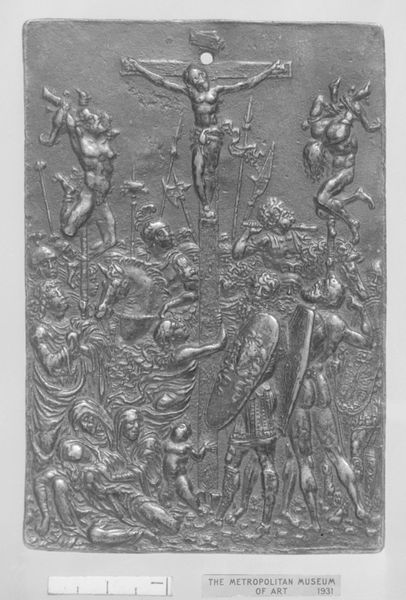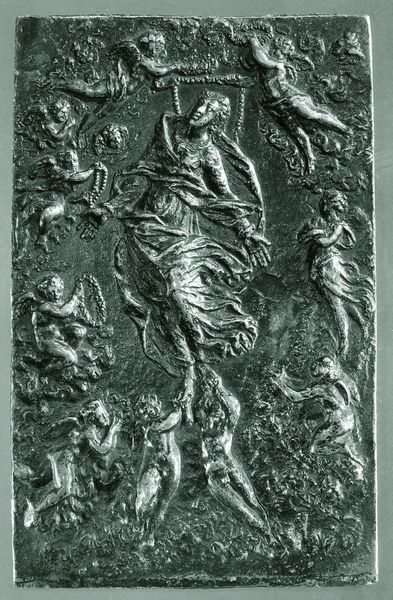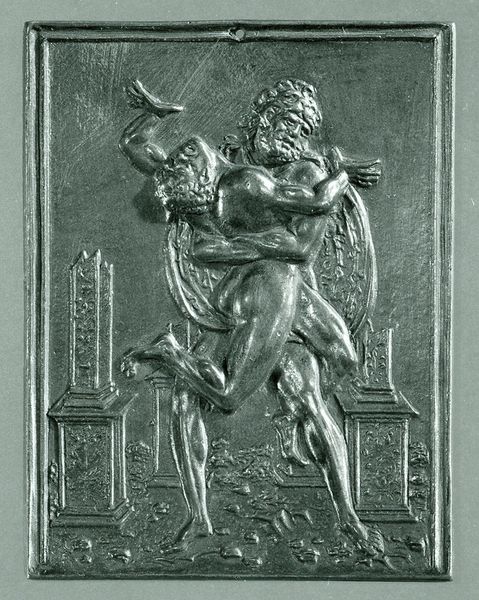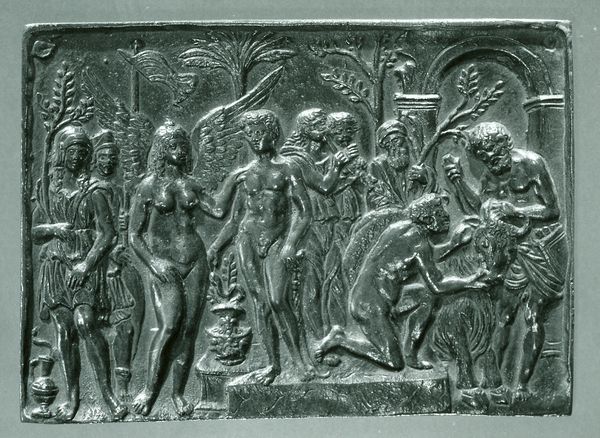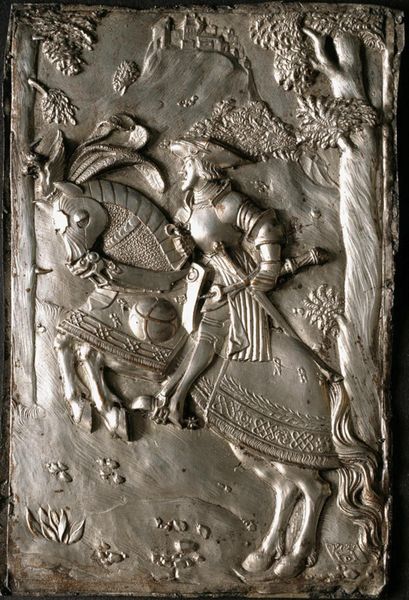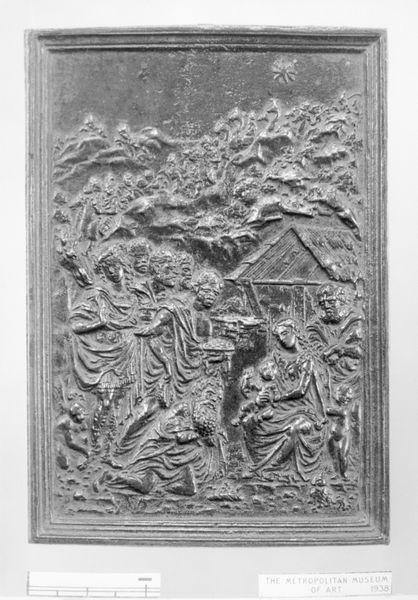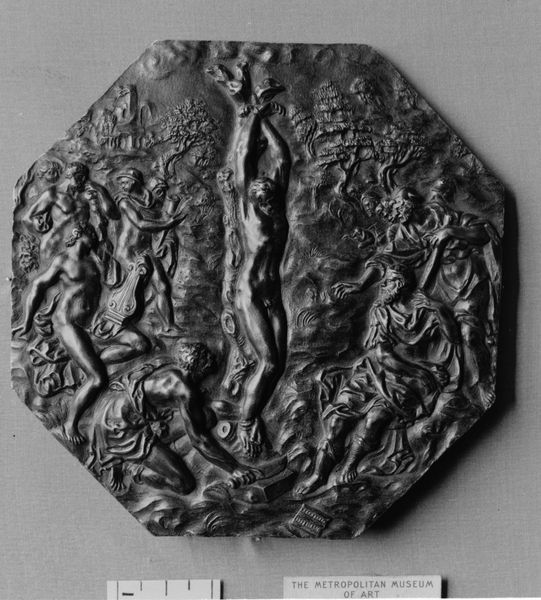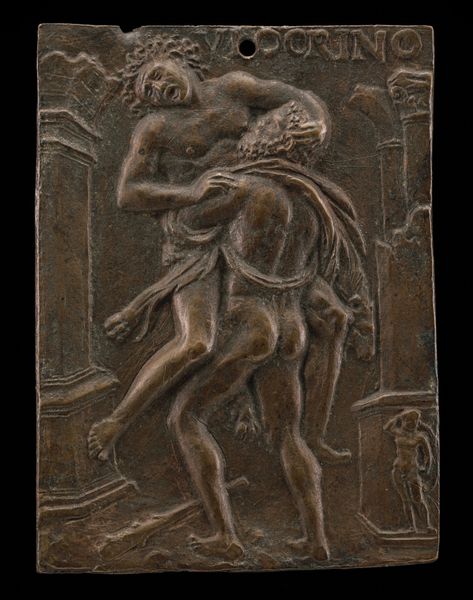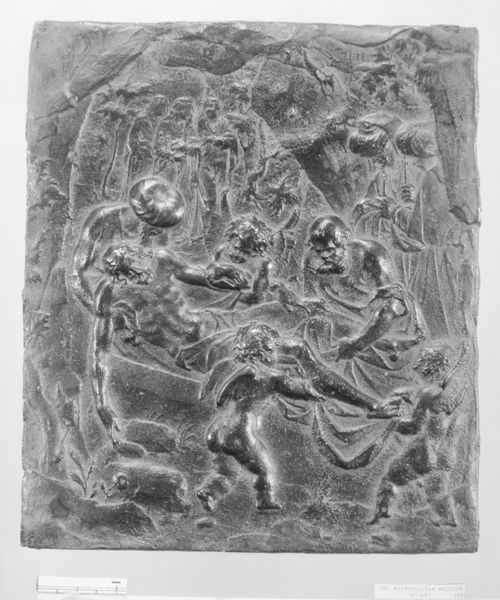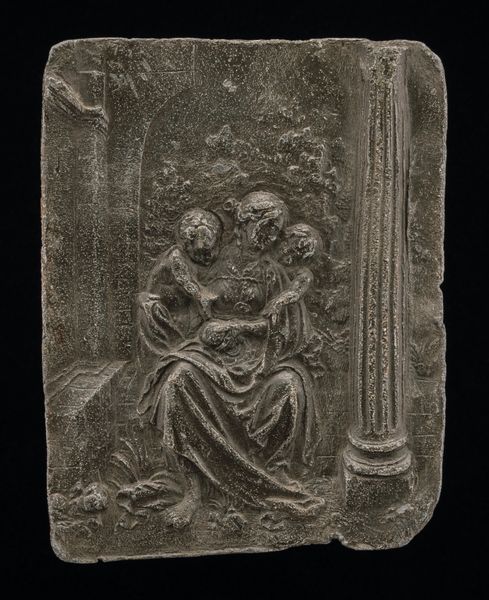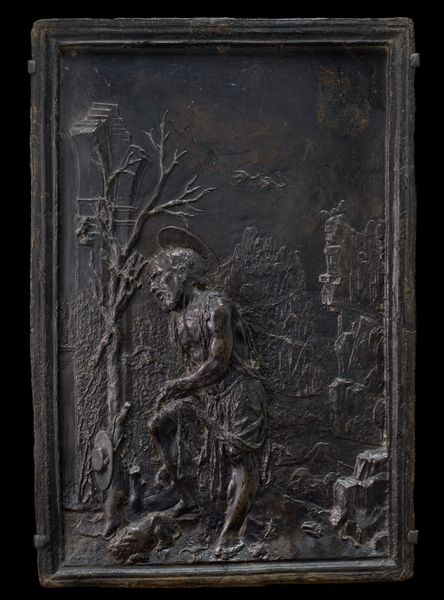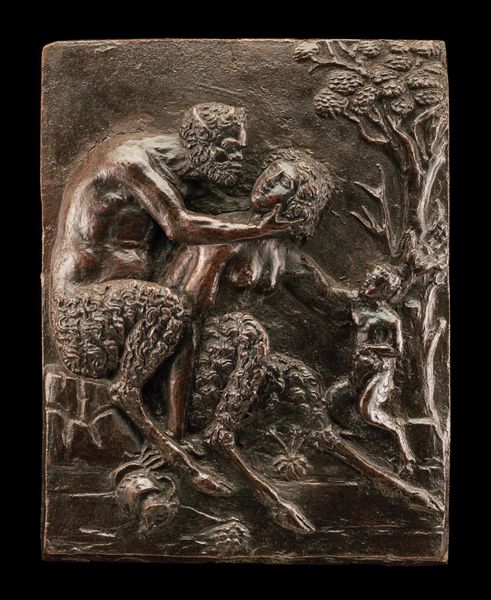
carving, metal, relief, sculpture
#
carving
#
narrative-art
#
metal
#
sculpture
#
textured
#
relief
#
landscape
#
figuration
#
sculpture
#
carved
#
history-painting
#
italian-renaissance
Dimensions: 7.5 x 5.7 cm, wt. 76.32 g.
Copyright: Public Domain
Curator: Welcome. Before us is “St. Jerome in the Wilderness,” a metal relief attributed to Moderno, or Galeazzo Mondella, crafted sometime between 1487 and 1493. Editor: My immediate impression is one of tactile intensity. Look at that incredibly detailed surface! The dense textures practically beg to be touched. It feels like a concentrated burst of raw energy. Curator: It's a masterful rendering of Jerome’s penitence. He is depicted kneeling in the wilderness, gazing towards a makeshift crucifix. His gaunt figure, the lion at his feet—they’re all iconic representations of his story, embodying humility and devotion. Editor: I'm fascinated by the materiality. Working in metal relief like this involves hammering, chasing, and a host of other physical processes. This isn't just about symbolic meaning, but about the labor and skill poured into transforming base metal into something so intricate and narrative. Think of the artist's workshop! Curator: The landscape is also incredibly evocative, representing the harsh desert where Jerome spent years in prayer. The cave in the background, the rough terrain, it amplifies the sense of isolation and spiritual struggle. He chose this life, after all. Editor: Absolutely. The landscape, however, it’s a stage for Jerome's drama, fashioned by tools and processes. You can almost see the marks of the artisan, pushing, carving, defining forms. I wonder what tools Mondella employed? And what was the societal status of such work at this time? Curator: Consider the intended audience. Small metal reliefs such as this were meant for private devotion, fostering an intimate connection with the saint and his message of self-sacrifice and religious commitment. It speaks volumes about how they shaped religious and social experience. Editor: It also raises questions of value and function. Was this meant to adorn an altar, to be handled during prayer, or displayed as a sign of status and education? What economic role did works of devotion like this fill? Curator: It really makes you think about how imagery becomes intertwined with cultural memory and how we continue to interpret figures like St. Jerome across centuries. Editor: And for me, it stresses how materials shape our experiences, adding another dimension to art history through close looking and a thorough evaluation of the social contexts of the medium itself.
Comments
No comments
Be the first to comment and join the conversation on the ultimate creative platform.

